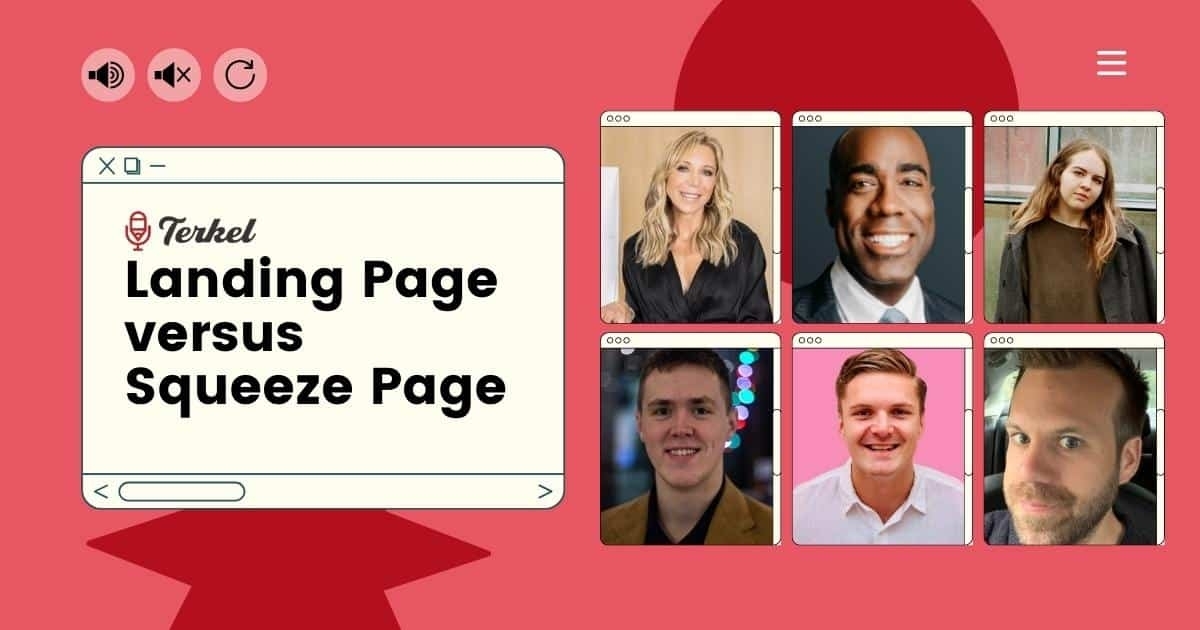What’s the difference between a landing page vs squeeze page?
Featured

What's the difference between a landing page vs squeeze page?
To help you best appreciate the purpose of landing pages and squeeze pages, we asked webmasters and content marketing professionals this question for their best insights. There are several insights that highlight the main differences between a landing page and a squeeze page to clarify how each works in marketing your brand.
Here are nine differences between a landing page and a squeeze page:
- One Seeks User Emails and The Other Any Desired Action
- Contact Information vs Product and Other Details
- Each Represents Different Stops Along the Customer Journey
- One Links To The Main Website While The Other May Not
- One is Simplistic and The Other is Thorough
- One is The Optimized Version of The Other
- Variety of Offerings vs Singular Focus
- More Actions from Users vs Just One
- Both Have The Same Purpose but Presented Differently
One Seeks User Emails and The Other Any Desired Action
A landing page is any web page that you send a visitor to when promoting a product, service or business. For example click here to purchase the best coffee machine with free freight. The page will give all the product details and attempt to persuade the person to purchase the product.
A squeeze page on the other hand is designed to entice a website visitor to fill out their email address, either in return for some free gift or just to receive some future information, product or service. For example the simplest squeeze page says please give me your email address to join my email newsletter. A squeeze page is focused 100% on getting an email address to allow future marketing.

Contact Information vs Product and Other Details
The amount of information on the page. Squeeze pages usually have one very specific goal — to get someone's email address or other contact information.
Because they are designed to serve a straightforward purpose, they tend to be much shorter and more succinct than regular landing pages are.
Landing pages, on the other hand, often contain more information so they can be used to sell a product, educate customers about services or a variety of other goals. All squeeze pages are landing pages, but not vice versa.

Each Represents Different Stops Along the Customer Journey
A squeeze page is more direct than a landing page. It has a singular focus: to convert prospects into customers. A landing page on the other hand provides important details to customers regarding your product or service. By providing this information, you'll incentivize these customers into becoming clients down the road. A landing page is an essential early part of the customer journey. A squeeze page is a further stop along that journey.

One Links To The Main Website While The Other May Not
One difference between a landing page and a squeeze page is that landing pages can be used as a part of your overall website design, while squeeze pages are typically standalone pages that are not linked to your main website navigation. Because users can generally navigate to a landing page from your main website, you'll want to make sure that the design and messaging of your landing page are consistent with the rest of your site, whereas, with a squeeze page, you have more freedom to experiment with a unique design and message that is focused solely on converting visitors into leads.

One is Simplistic and The Other is Thorough
While both a landing page and squeeze page share the same purpose, they contain different elements and have different objectives. A squeeze page seeks to squeeze less content on the page, but is more direct and focused on a single product or service. Meanwhile, a landing page is a single page that provides enough details to educate the user on a specific topic and, unlike a squeeze page, may include navigation, links, tags, and other calls of action. Which type of page you choose should depend on your objectives and what you want to relay to your customers.

One is The Optimized Version of The Other
A landing page is where visitors go after clicking a digital advertisement or email link. For most websites, the landing page is the homepage but it can also be another page on the site. Landing pages include sales copy and images to persuade a visitor to reach a conversion goal. A squeeze page is a highly-optimized landing page with the goal of obtaining a visitor's name and email address. They use social proof like reviews to build trust with new visitors.
Most squeeze pages prompt visitors to submit their email addresses to sign up for a mailing list. With a person's name and email, marketers can send newsletters and lead-nurturing messages as well as exclusive discounts and special promotions.
Squeeze pages can be static web pages or popups that appear anywhere on the website. Usually, they follow a specific design in order to maximize conversion rates. A carefully chosen image, the company's logo, and a value proposition along with a form to enter your email address are standard.

Variety of Offerings vs Singular Focus
The main difference I see between landing pages and squeeze pages is ability to link internally and offer variety in doing so. A landing page will give you more at bats if designed correctly. With a landing page, you can internally link to many other topical articles or products whereas a squeeze page typically has a single focus. Squeeze pages are easier to determine absolute ROI when it comes to paid media. Whereas, a landing page is better in an organic strategy where you might not know the searchers intent. A great example is someone searching for "pool toys" versus "pool noodles". A squeeze page to buy a pool noodle is best for that search, but a landing page that links to many different types of pool toys is probably best for the former search.

More Actions from Users vs Just One
The main difference between a squeeze page and a landing page lies in the number of actionable items offered to the visitor. To determine if you need a landing page or a squeeze page, ask yourself the following: do I want a visitor to make one click or browse through several options?
A squeeze page offers just one call-to-action, usually in the form of an email submission form for a newsletter or something similar. A landing page on the other hand, offers a number of products, services, or information to scroll through.
The main difference between a squeeze page and a landing page has to do with the breadth of activity required by the visitor.

Both Have The Same Purpose but Presented Differently
Even though landing and squeeze pages have the same purpose, the content is drafted differently. A squeeze page is more specific. This means there are fewer distractions to divert the audience’s attention. The user sees information in a concise and precise manner. As a result, the content conveys the message with a direct call to action. Unlike the landing page, a squeeze page pushes the audience to leave their email address. It helps websites generate more leads.

Submit Your Answer
Would you like to submit an alternative answer to the question, "What's the difference between a landing page vs squeeze page?" Submit your answer by signing at Featured.com.

